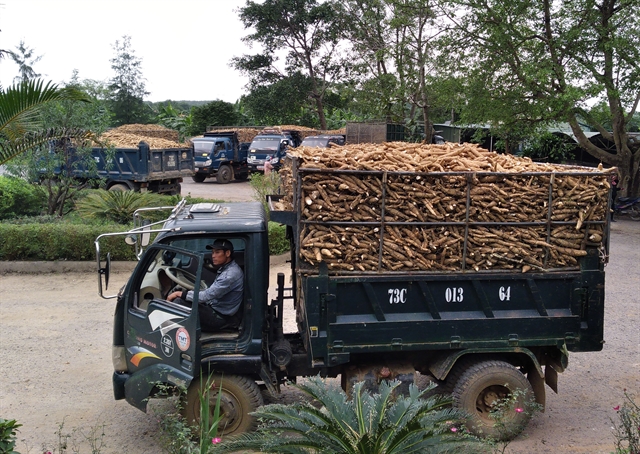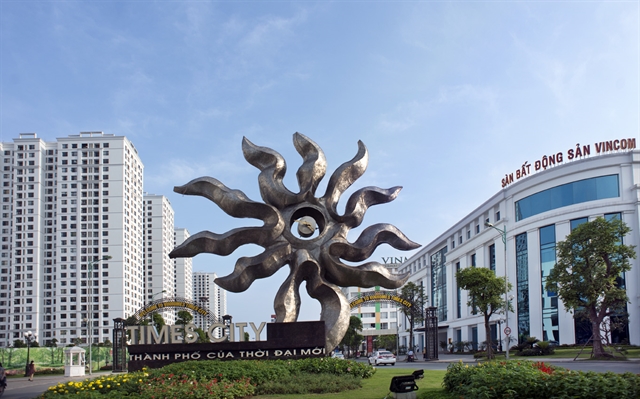 Society
Society


|
| Hundreds of big and small boats quietly are anchored at Lạch Hới fishing port in Thanh Hoá Province’’s Sầm Sơn City although the first months of the year was considered as the “golden season” for fishermen. Photo qdnd.vn |
THANH HÓA — Central provinces are facing a shortage of workers for the fishing industry in both quality and quantity, posing challenges to the sector as many boat owners are forced to sell their vessels and change jobs.
With a coastline of 102km, Thanh Hóa Province has a long fishing history. However, offshore fishing fleets in the province are struggling while fewer locals are involved in fishing.
The hustle and bustle in the past is absent at Lạch Hới fishing port in Sầm Sơn City, where once large baskets full of freshly-caught seafood were transported ashore and then delivered elsewhere.
Now, hundreds of big and small boats are anchored at the port, even though the first months of the year are considered the “golden season” for fishermen.
Nguyễn Văn Tuyên, director of Lạch Hới fishing port, said the number of ships arriving and leaving the port has reduced significantly in recent years.
“Our port now operates at about 35 per cent of its capacity,” he said, lambasting economic restructuring which has pushed local workers away from fishing.
Phạm Gia Sơn, a shipowner, said his family has fished for many generations.
“We used to make 3-4 fishing trips a month and need 12-14 labourers for a trip but we have faced a lot of difficulties in the past two years due to the scarcity of workers,” he told Quân đội nhân dân (People’s Army) newspaper.
Sơn said some people with years of fishing experience have shifted to other jobs.
“Although we are fully prepared to sail offshore, our ship is docked for days because we can't find enough workers,” Sơn said, adding that there were trips that only the shipowner and chief engineer are professional and the rest are seasonal labourers.
Echoing Sơn’s opinion, Nguyễn Văn Long, director of Ngọc Sơn Seafood Processing Co.Ltd, said hiring seamen has been tough in recent years.
His company has six large ships specialising in fishing logistic services. Each trip requires 12-15 workers but they could only employ 8-10 people.
Due to the lack of labourers, the company has to hire workers from other localities, even inexperienced people from mountainous districts such as Quan Sơn, Quan Hoá, and Mường Lát.
Nguyễn Đức Cường, head of Thanh Hóa Fisheries sub-department, said the worker shortage was affecting many coastal areas of the province.
He said unstable income and hard work were causing fishermen to seek other work.
A decline in fisheries resources, the shrinking size of traditional fishing grounds and low efficiency were also problems.
There are about 1,290 offshore fishing ships out of the 7,096 total working fishing ships in the province.
The number of boats fishing near the shore has become overwhelming compared to offshore fishing vessels and overfishing near the shore has depleted marine resources. Many marine species are showing signs of strong decline and are even facing the danger of extinction.
The effect of the COVID-19 pandemic, storms and floods and extreme weather as well as the rising cost of gasoline and labourers have led to inactive fishing boats.
A similar situation has been reported in other central provinces including Nghệ An, Hà Tĩnh and Quảng Bình.
The number of labourers engaged in fishing has decreased in Nghệ An Province in recent years. Worse still, there are few seamen aged between 18 and 35 and 30 per cent of the marine workforce is more than 60 years old.
Nguyễn Văn Ước from Quỳnh Long Commune in Quỳnh Lưu District said he had joined with seven households in the commune to build a fishing boat with an engine capacity of 717CV.
However, they had to sell the ship at the end of last year for VNĐ1.7 billion (US$73,557), less than a third of the initial cost, because there were not enough seamen to man the ship.
Selling the ship meant they had to find other jobs.
Bùi Xuân Trúc, deputy head of Quỳnh Lưu District’s Agriculture and Rural Development Office, attributed the decrease in marine labour to the unreasonable occupational structure, shortcomings in exploiting and preserving seafood products after harvesting and increasing competition between localities.
“This requires fishing activities to renovate themselves to keep up with the current trend,” he said.
Coping with the labour shortage, many boat owners in Quảng Bình Province’s Bố Trạch District had to retain workers by paying their salaries in advance.
Shipowner Nguyễn Ngọc Hải in Bố Trạch District said: “It is difficult to recruit enough workers who will accompany us. Thus, labourers will get paid in advance to entice them.”
However, some people did not work for them after receiving the salary, he said.
Long-term solutions
As the shortage of labour has harmed the livelihoods of fishermen and fisheries exploitation and processing, localities in the central region have adopted solutions to deal with the problems.
Cường, the head of Thanh Hóa Fisheries Sub-department, said the province has encouraged boat owners to use modern equipment in fisheries exploitation such as sonar fishfinders and promote mechanisation in the fishing and net collection stages to boost exploitation efficiency and reduce the number of employees on the fishing vessel.
“In the short term, we are suggesting localities to have support policies for fishermen to change their jobs to ease their concern over income and livelihood.
“Special attention should be paid to reducing the pressure on exploitation in coastal areas,” Cường said.
Lê Cẩm Long, head of Bố Trạch District Agriculture and Rural Development Subdepartment, said for the fisheries to develop sustainably as well as bring adequate income to people, local authorities were directing communes to restructure occupations accordingly and expand the fishing grounds to the Trường Sa area to catch more valuable fish while reducing the pressure of exploitation in the Gulf of Tonkin.
Trần Như Long, Deputy Director of Fisheries Sub-Department of Nghệ An, said in the long-term, it was necessary to take measures to regenerate resources in the direction of both exploitation and protection due to declining marine resources.
“Only when the aquatic resources are well regenerated and people enjoy exploitation and have better income, then people will engage with the sea again,” he said.
Lê Ngọc Linh, Director of the Fisheries Sub-Department of Quảng Bình, proposed the Government study practical and long-term policies such as banning sailing during the fish breeding season and providing fuel for fishermen.
More attention should be paid to dissemination work, calling on fishermen to increase labour productivity and get training on how to exploit marine resources effectively, he said. — VNS









